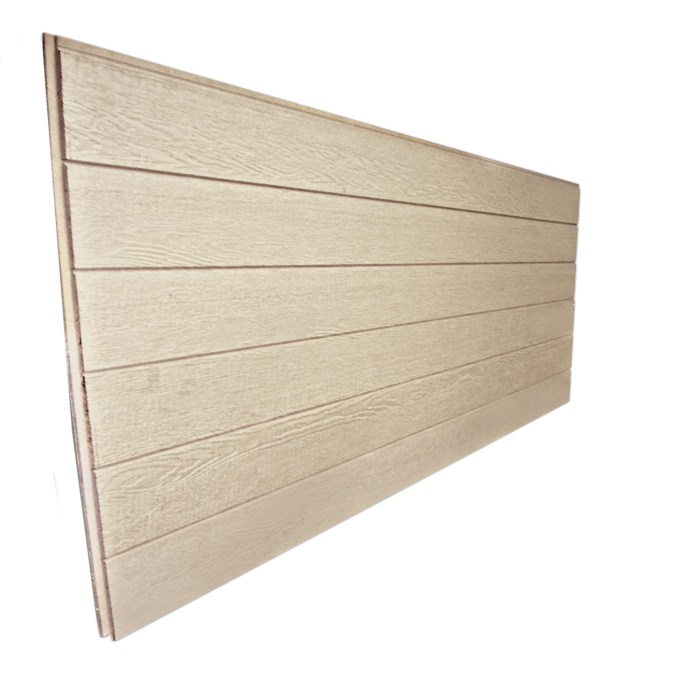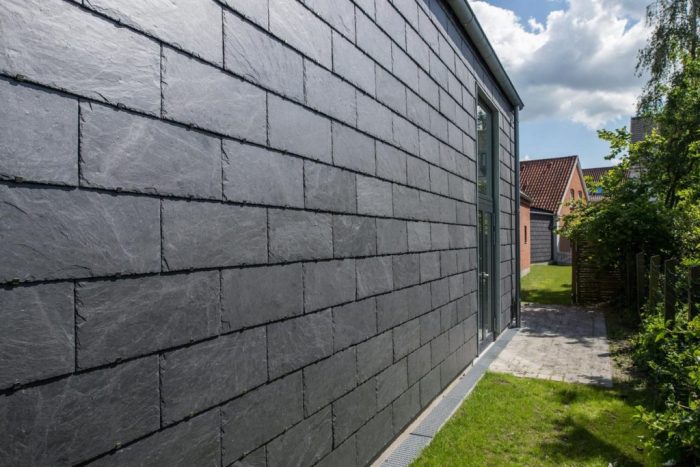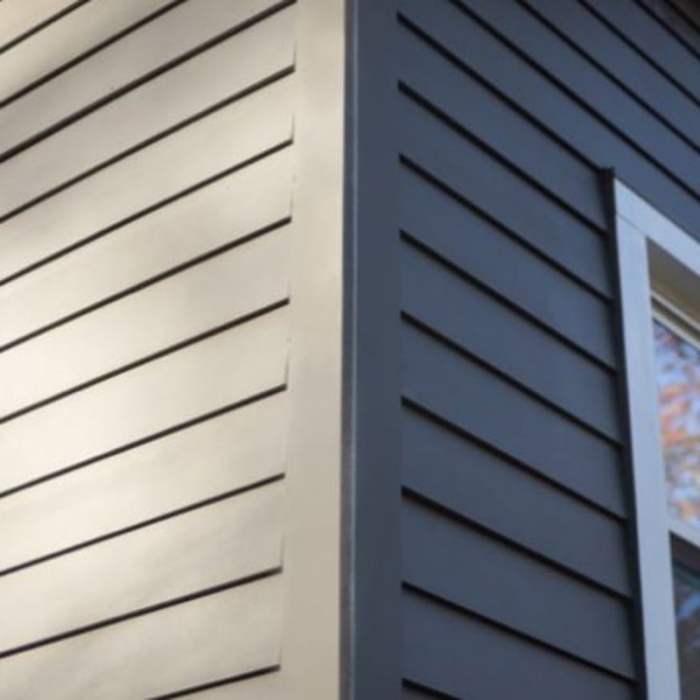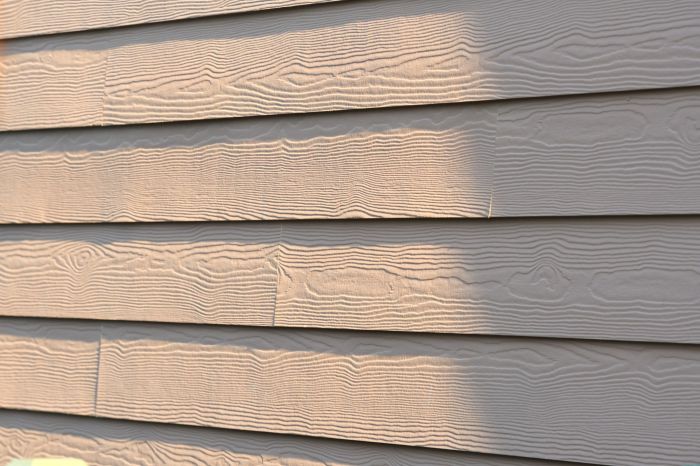Hardie panel vertical siding offers a durable and aesthetically pleasing exterior cladding solution for homes and buildings. This guide delves into every aspect of this popular siding choice, from its manufacturing process and diverse styles to installation techniques, maintenance strategies, and long-term cost considerations. We’ll explore the environmental impact, compare it to other materials, and address common installation and maintenance challenges. Whether you’re a homeowner planning a renovation or a contractor seeking comprehensive knowledge, this resource provides the essential information needed to make informed decisions about Hardie panel vertical siding.
Understanding the nuances of Hardie panel vertical siding is crucial for achieving a successful project. From selecting the right style and finish to budgeting effectively and troubleshooting potential issues, this guide provides a practical roadmap to guide you through each stage of the process. We’ll examine the advantages and disadvantages, providing you with a comprehensive understanding of this versatile and increasingly popular siding option.
Product Overview: Hardie Panel Vertical Siding

Hardie panel vertical siding, manufactured by James Hardie, offers a durable and aesthetically pleasing exterior cladding solution for residential and commercial buildings. Its popularity stems from a combination of longevity, low maintenance, and attractive design options. This section details the manufacturing process, available styles and finishes, and a comparison to other common siding materials.
Hardie Panel Vertical Siding Manufacturing
James Hardie’s manufacturing process for fiber cement siding begins with a blend of Portland cement, cellulose fibers, and other additives. This mixture is then formed into panels under high pressure, creating a dense and strong material. The panels are subsequently cured in a controlled environment to ensure proper hardening and strength. Finally, the panels undergo a finishing process, which includes applying a primer and various color coatings to achieve the desired aesthetic. This rigorous process results in a siding option that is exceptionally resistant to damage from moisture, insects, and fire.
Styles and Finishes of Hardie Panel Vertical Siding
Hardie offers a diverse range of styles and finishes for its vertical siding, allowing homeowners to personalize their exterior. These include various textures, mimicking the look of wood clapboard or other natural materials, and a wide spectrum of colors. Some popular styles include smooth, textured, and cedar-look finishes. The color palette is extensive, encompassing both traditional and contemporary shades, providing flexibility for any architectural style. Many finishes include a protective coating to enhance durability and weather resistance.
Comparison to Other Siding Materials
Hardie panel vertical siding presents several advantages compared to alternative materials like vinyl and wood. Unlike vinyl, which can easily dent or fade, Hardie siding boasts superior durability and resistance to damage. Compared to wood, it requires significantly less maintenance, eliminating the need for regular painting or staining. While wood siding is susceptible to rot, insect infestation, and fire damage, Hardie siding offers superior protection against these issues. However, Hardie siding typically has a higher initial cost than vinyl, although this is often offset by its longer lifespan and reduced maintenance needs.
Price Comparison of Hardie Panel Vertical Siding Options
The price of Hardie panel vertical siding varies depending on the style, finish, and region. Generally, simpler styles and finishes are more affordable than those with intricate textures or specialized coatings. The following table provides a general price range based on typical market values; actual costs may vary based on location and retailer.
| Style | Finish | Price Range per Square Foot (USD) | Notes |
|---|---|---|---|
| Smooth | Standard Color | $3.00 – $4.50 | Most economical option. |
| Textured (e.g., Cedarmill) | Standard Color | $4.00 – $5.50 | Offers a more natural wood-like appearance. |
| Smooth | Custom Color | $4.50 – $6.00 | Adds cost for specialized paint. |
| Artisan Collection | Various Finishes | $6.00 – $8.00+ | Premium options with unique textures and colors. |
Installation and Maintenance
Installing Hardie panel vertical siding requires careful planning and execution to ensure a long-lasting, attractive exterior. Proper installation techniques, combined with a consistent maintenance schedule, are crucial for maximizing the lifespan and aesthetic appeal of this durable siding. This section details the process, necessary tools, and best practices for both installation and upkeep.
Installation Process
The installation of Hardie panel vertical siding typically begins with proper preparation of the wall surface. This involves removing any existing siding, repairing any damaged areas of the sheathing, and ensuring the wall is clean and dry. Next, install the necessary flashing and starter strips at the bottom of the wall to provide a water barrier and a level starting point for the siding panels. The panels are then installed vertically, overlapping each other according to the manufacturer’s instructions, typically using nails or screws. Each panel should be carefully aligned and secured to maintain a consistent appearance. Finally, install trim pieces, such as corner boards and J-channels, to finish the installation and provide a professional look. Remember to always consult the manufacturer’s specific instructions for your chosen Hardie panel product as installation methods may vary slightly.
Tools and Equipment
Successful Hardie panel siding installation requires a range of tools and equipment. These include a measuring tape, level, chalk line, circular saw or hand saw (for cutting panels to size), nail gun or drill (with appropriate bits), safety glasses, work gloves, and a ladder or scaffolding for safe access to higher areas. Additional tools may be necessary depending on the complexity of the project, such as a caulking gun for sealing joints and a putty knife for filling gaps. Having all necessary tools readily available will streamline the installation process and minimize interruptions.
Maintenance Best Practices
Regular maintenance is vital to preserving the beauty and integrity of Hardie panel siding. This includes periodic cleaning to remove dirt, debris, and cobwebs. A simple solution of mild detergent and water, applied with a soft brush or sponge, is usually sufficient. Power washing should be done cautiously, using a low-pressure setting to avoid damaging the siding. Regular inspections should also be conducted to identify and address any issues such as loose panels, damaged areas, or signs of water damage. Promptly addressing minor problems can prevent them from escalating into more costly repairs. Furthermore, inspecting for and addressing any pest infestations, such as termites, is crucial to prevent structural damage.
Preventative Maintenance Schedule
A preventative maintenance schedule should be implemented to ensure the longevity of Hardie panel siding. This schedule should include:
- Annual Inspection: A thorough visual inspection should be performed annually to check for loose panels, cracks, or signs of damage.
- Cleaning (Twice Yearly): Clean the siding twice a year, once in the spring and once in the fall, using a mild detergent solution and a soft brush or sponge.
- Power Washing (Every 2-3 Years): Power wash the siding every 2-3 years, using a low-pressure setting to remove stubborn dirt and grime. Always test in an inconspicuous area first.
- Caulk Replacement (As Needed): Inspect and replace any damaged or deteriorated caulk around windows, doors, and other openings.
Following this schedule will help maintain the appearance and structural integrity of your Hardie panel siding for many years. Remember that the specific needs may vary based on your climate and environmental conditions. For example, in areas with heavy rainfall, more frequent inspections and cleaning might be necessary.
Design and Aesthetics
Hardie panel vertical siding offers a remarkable blend of durability and aesthetic appeal, making it a versatile choice for a wide range of architectural styles and design preferences. Its clean lines and consistent texture provide a modern foundation upon which homeowners can build a truly unique exterior. The ability to customize color and pattern allows for significant creative freedom, transforming the look and feel of any home.
Hardie panel vertical siding’s adaptability extends across various architectural styles. From classic colonial homes to contemporary designs, the siding’s versatility allows for seamless integration, enhancing the overall aesthetic without overpowering the existing architectural features. The clean lines of the siding complement both traditional and modern designs equally well, providing a consistent and high-quality finish.
Color Choices and Their Impact
The selection of color significantly influences the overall impression of a building clad in Hardie panel vertical siding. Light colors, such as creams, whites, and light grays, create a sense of spaciousness and airiness, making smaller homes appear larger. Conversely, darker colors, like deep blues, greens, and browns, can create a feeling of solidity and grandeur, particularly effective on larger homes. The interplay of light and shadow on different colors also adds depth and visual interest to the façade. Consider the surrounding landscape and the overall architectural style when choosing a color; a harmonious relationship between the house and its environment is key to achieving a cohesive and aesthetically pleasing design.
Design Applications of Hardie Panel Vertical Siding
The diverse applications of Hardie panel vertical siding demonstrate its adaptability and versatility. Below are several examples showcasing its use in different design contexts.
- Traditional Homes: Hardie panel siding in classic colors like creamy white or muted gray can enhance the timeless elegance of a colonial or Victorian home. The clean lines of the siding complement the intricate details of traditional architecture, providing a modern update without sacrificing historical character.
- Modern Homes: In contemporary designs, Hardie panel siding in bold colors or striking patterns can add a dramatic flair. The clean lines and smooth texture of the siding are perfectly suited to minimalist and modern architectural styles, providing a sleek and sophisticated look.
- Farmhouse Style: A warm, earthy color palette, such as deep browns or muted greens, pairs beautifully with Hardie panel siding to create a rustic and inviting farmhouse aesthetic. The siding’s durability makes it ideal for withstanding the elements, ensuring long-lasting beauty in rural settings.
- Coastal Homes: Light blues, grays, and whites evoke a fresh, airy feel, perfectly suited for coastal homes. The durability of Hardie panel siding ensures it can withstand harsh weather conditions near the ocean, maintaining its aesthetic appeal for years to come.
Visual Representation of Siding Patterns and Colors
Imagine a two-story house. One side displays a light gray Hardie panel siding with a subtle horizontal shadow line pattern, creating a clean, modern look. The other side shows the same house, but with a deep blue Hardie panel siding and a more pronounced vertical board-and-batten pattern. The light gray side appears larger and more open, while the deep blue side projects a sense of strength and sophistication. The difference in patterns further enhances the visual contrast, demonstrating how color and pattern choices significantly impact the overall appearance. The interplay of light and shadow across the different colors and textures adds depth and dimension to the house’s exterior, creating distinct aesthetic impressions.
Environmental Impact and Sustainability
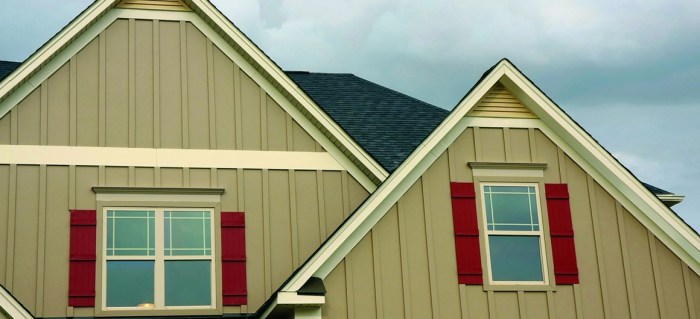
Hardie panel vertical siding offers a compelling combination of durability and aesthetic appeal, but its environmental impact is a crucial factor for environmentally conscious homeowners and builders. Understanding the lifecycle of this material, from manufacturing to disposal, allows for informed decisions about its suitability within a sustainable building strategy. This section details the environmental benefits and drawbacks of choosing Hardie panel siding, providing a comprehensive overview to facilitate responsible material selection.
Hardie siding, primarily composed of fiber cement, presents several environmental advantages over traditional materials. Its longevity reduces the need for frequent replacements, minimizing the associated resource consumption and waste generation. Furthermore, the manufacturing process, while energy-intensive, often utilizes recycled materials and aims for reduced emissions in many modern facilities. However, the extraction of raw materials and the energy required for production remain significant environmental considerations.
Environmental Benefits of Hardie Panel Vertical Siding
The environmental advantages of Hardie panel siding stem from its durability, longevity, and the potential for incorporating recycled materials in its manufacture. These factors contribute to a lower overall environmental footprint compared to some alternatives, particularly when considering the entire lifecycle of the product.
- Extended Lifespan: Hardie siding’s resistance to rot, insects, and fire significantly extends its lifespan, reducing the frequency of replacements and associated waste.
- Reduced Material Consumption: The long lifespan inherently minimizes the need for frequent material sourcing and production, leading to lower overall resource consumption compared to materials requiring more frequent replacement.
- Potential for Recycled Content: Some manufacturers incorporate recycled materials into the production of Hardie panel siding, further reducing the environmental impact by diverting waste from landfills.
- Fire Resistance: The inherent fire resistance of Hardie siding contributes to fire safety and reduces the environmental consequences of potential fires.
Carbon Footprint Comparison
A direct comparison of the carbon footprint of Hardie panel siding to other siding materials is complex and depends on various factors, including manufacturing processes, transportation distances, and the specific material composition. However, general comparisons can be made. Studies suggest that fiber cement siding, while energy-intensive in production, often has a lower overall carbon footprint than some wood sidings, particularly those sourced from unsustainable forestry practices. The embodied carbon (the carbon emissions associated with the manufacturing and transportation of the material) of vinyl siding is also often cited as a significant concern due to the fossil fuel dependence of its production. A comprehensive life-cycle assessment (LCA) is required for precise comparisons.
Recyclability and Disposal
The recyclability and disposal methods for Hardie panel siding vary depending on local regulations and waste management infrastructure. While not directly recyclable in the same way as some metals, some manufacturers offer recycling programs or partnerships with recycling facilities that can process the material’s components. In situations where recycling isn’t feasible, responsible disposal through appropriate landfill channels is crucial. Consult local waste management authorities for specific guidelines on the proper disposal of Hardie panel siding in your area. Improper disposal can contribute to environmental pollution and resource depletion.
Cost Analysis and Budgeting
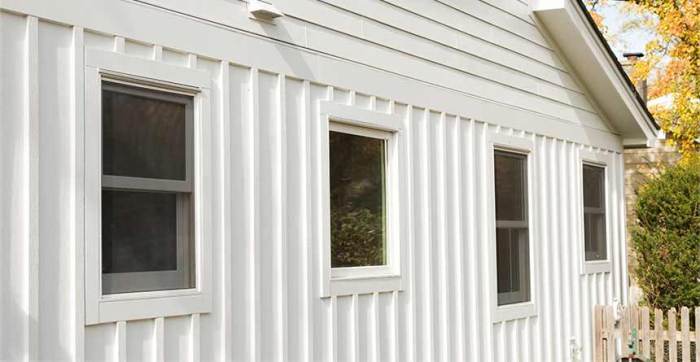
Planning a Hardie panel vertical siding project requires a realistic budget. Several factors significantly influence the final cost, making careful consideration crucial for avoiding unexpected expenses. Understanding these factors allows for informed decision-making and a smoother project execution.
Factors Influencing Hardie Panel Siding Costs
The total cost of Hardie panel vertical siding installation is determined by a combination of material costs, labor costs, and other project-specific expenses. Material costs vary depending on the chosen panel type, color, and quantity needed. Labor costs fluctuate based on the project’s complexity, the installer’s experience, and regional labor rates. Additional factors, such as the need for repairs or removal of existing siding, also contribute to the overall expense. Permits and inspections add to the budget, as do unforeseen issues that might arise during installation.
Labor Costs Versus Material Costs
Generally, labor and material costs represent roughly equal portions of the total project expense. However, this ratio can vary. For example, a project requiring extensive preparation work, such as removing old siding or dealing with complex architectural details, will likely have a higher labor-to-material cost ratio. Conversely, a straightforward installation on a simple structure might have a more balanced ratio or even a higher material-to-labor cost. Accurate estimation requires a detailed breakdown of both components, considering the project’s specifics. Obtaining multiple quotes from reputable contractors allows for a comparison of these costs.
Tips for Effective Budgeting
Effective budgeting for a Hardie panel siding project involves several key steps. First, accurately measure the area to be sided to determine the necessary material quantity. Second, obtain detailed quotes from multiple contractors, comparing not only the total cost but also the breakdown of labor and material costs. Third, factor in potential additional costs, including permits, inspections, and potential unforeseen issues. Fourth, consider financing options if needed, comparing interest rates and repayment terms. Finally, build a contingency buffer of 10-15% into the budget to accommodate unexpected expenses.
Sample Budget for a Typical Home Siding Project
This sample budget illustrates a typical cost breakdown for a medium-sized home (approximately 1,500 square feet of siding area). Remember that these figures are estimates and can vary significantly based on location, contractor, and project specifics.
| Item | Cost |
|---|---|
| Materials (Hardie Panel Siding, Nails, Flashing, etc.) | $8,000 – $12,000 |
| Labor (Preparation, Installation, Cleanup) | $7,000 – $10,000 |
| Permits and Inspections | $500 – $1,000 |
| Contingency (10-15%) | $1,500 – $2,750 |
| Total Estimated Cost | $17,000 – $25,750 |
Troubleshooting and Common Issues
Hardie panel vertical siding, while durable and aesthetically pleasing, can present certain challenges during installation and throughout its lifespan. Understanding these potential problems and their solutions is crucial for ensuring a successful project and maximizing the longevity of the siding. Proper planning and attention to detail during installation significantly minimize the likelihood of future issues.
Installation Challenges and Solutions
Addressing problems during installation is key to preventing costly repairs later. Failing to address these issues promptly can lead to more extensive and expensive rectification. The following points Artikel common installation challenges and their corresponding solutions.
- Improper Cutting and Fitting: Incorrectly cut panels can lead to gaps, misalignment, and an unprofessional finish. Solutions include using a sharp, fine-toothed blade for precise cuts, utilizing a miter saw for angled cuts, and carefully measuring and planning panel placement before installation. Pre-drilling pilot holes is also crucial to prevent cracking.
- Nail Placement and Spacing: Incorrect nail placement can compromise the structural integrity of the siding and lead to buckling or warping. Solutions involve adhering strictly to the manufacturer’s recommended nail spacing and penetration depth. Using galvanized nails specifically designed for fiber cement is also essential for preventing corrosion and damage.
- Moisture Issues: Exposure to excessive moisture during installation or improper sealing can lead to water damage and deterioration. Solutions involve ensuring the underlying sheathing is properly primed and sealed, and using appropriate caulking and sealants around windows, doors, and other penetrations. Allowing sufficient time for drying between coats of primer and paint is also critical.
- Damage During Handling and Transportation: Fiber cement panels, while robust, can be susceptible to chipping or cracking if mishandled. Solutions involve careful handling and transportation, using appropriate lifting equipment where necessary, and protecting the panels from impacts and abrasions during storage and installation.
Long-Term Issues and Remedies
Even with careful installation, Hardie panel siding can encounter problems over time. Regular inspection and prompt attention to these issues are vital for maintaining the siding’s appearance and structural integrity. Ignoring minor problems can often lead to larger, more expensive repairs.
- Cracking and Chipping: While resistant, impacts from debris or harsh weather can cause cracking or chipping. Solutions involve prompt repair using a compatible patching compound and paint to match the existing siding. For larger areas of damage, panel replacement may be necessary.
- Fading and Discoloration: Exposure to sunlight can cause the siding to fade over time. Solutions include applying a high-quality exterior paint designed for fiber cement siding, and ensuring the paint is rated for UV protection. Regular cleaning can also help to maintain the siding’s color.
- Water Damage: Failure of caulking or sealant around windows, doors, or other penetrations can lead to water ingress. Solutions involve regularly inspecting these areas for cracks or gaps, and promptly repairing or replacing damaged sealant. Addressing any underlying moisture issues within the wall system is also crucial.
- Mold and Mildew Growth: In humid climates, mold and mildew can grow on the siding’s surface. Solutions involve regular cleaning with a mild detergent and water solution, and ensuring proper ventilation to prevent moisture buildup. For persistent growth, a specialized mildew remover may be necessary.
Hardie panel vertical siding presents a compelling blend of durability, aesthetics, and sustainability. By carefully considering the factors Artikeld in this guide—from initial material selection and installation to ongoing maintenance and potential cost implications—you can confidently embark on your siding project. Remember to factor in your specific needs and preferences, and don’t hesitate to consult with professionals to ensure a successful outcome. With proper planning and execution, Hardie panel vertical siding can enhance your property’s curb appeal and provide lasting protection for years to come.
Key Questions Answered
What is the lifespan of Hardie panel vertical siding?
With proper maintenance, Hardie panel vertical siding can last for 30-50 years or more.
Is Hardie panel vertical siding difficult to install?
While DIY installation is possible, professional installation is often recommended for optimal results and warranty coverage. The complexity depends on the project’s scope.
Can Hardie panel vertical siding be painted?
Yes, Hardie panel siding can be painted with appropriate exterior-grade paints. Priming is usually recommended.
How does Hardie panel vertical siding perform in extreme weather conditions?
It’s designed to withstand a wide range of weather conditions, including extreme heat, cold, and moisture, exhibiting excellent resistance to damage from wind, rain, and snow.
Does Hardie panel vertical siding require special cleaning products?
Regular cleaning with mild soap and water is usually sufficient. Avoid abrasive cleaners.
